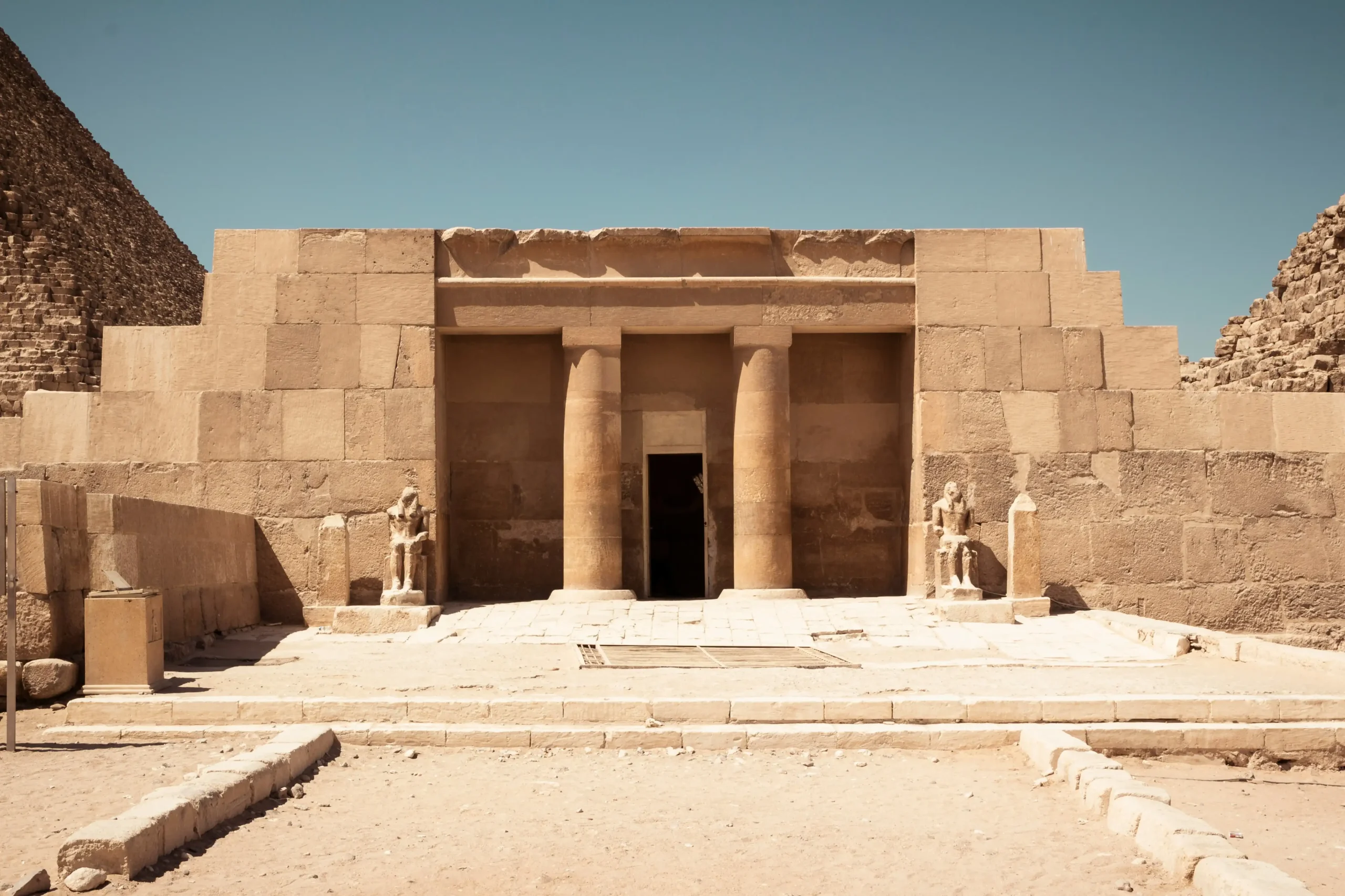In the ever-evolving world of architecture, innovation stands as the cornerstone of creativity and progress. As we navigate through a landscape filled with skyscrapers and sustainable homes, it’s clear that groundbreaking ideas are reshaping our built environment. We find ourselves at the intersection of technology and design, where the possibilities seem endless.
From eco-friendly materials to smart home integrations, architects are pushing the boundaries of what’s possible. These innovations not only redefine aesthetics but also enhance functionality and sustainability. As we explore these cutting-edge concepts, we’re inspired to think beyond traditional design and embrace a future where architecture harmonizes with nature and technology.
Let’s dive into the world of architectural innovation and discover the ideas that are setting new standards and inspiring the next generation of architects. Whether you’re a professional in the field or simply an enthusiast, these trends offer a glimpse into the future of design and construction.

The Essence of Innovation in Architecture
Innovation in architecture transforms how we envision and construct spaces. It’s driven by the convergence of creativity and technology, offering solutions that address modern challenges. For example, architects now integrate sustainable practices by using recycled materials and renewable energy systems. Urban areas have witnessed a surge in vertical gardens and green roofs, contributing to environmental health.
Digital tools streamline the design process and enhance precision. Computer-aided design (CAD) software simplifies complex projects while ensuring accuracy. For instance, 3D printing allows for creating intricate models that test architectural viability before implementation. This not only saves resources but also ensures a higher standard of quality.
Adaptive reuse demonstrates an innovative approach to sustainability. Repurposing older buildings preserves cultural heritage and reduces waste from new constructions. Many cities have converted warehouses into residential lofts and industrial sites into commercial spacers. This method illustrates a commitment to preserving history while meeting contemporary needs.
Incorporating smart technology represents another key aspect. Energy-efficient systems, like automated sensors and smart thermostats, optimize performance and reduce consumption in buildings. Interactive elements such as responsive lighting and climate control provide occupants with a customized living experience. This alignment with technology fosters a modern architectural landscape that prioritizes efficiency and comfort.

Sustainable Design Concepts
Sustainable architecture represents a crucial shift towards a more eco-friendly world. Our focus here is on how innovative ideas in this space contribute to overall architectural excellence.
Green Architecture
Green architecture centers on reducing environmental impact through thoughtful design and material selection. Builders often use locally-sourced materials like bamboo and reclaimed wood. These materials not only decrease transportation emissions but also support local economies. Passive solar design is another critical aspect, where structures capitalize on natural light and heat, minimizing energy reliance. Incorporating natural ventilation systems enhances air quality while reducing HVAC demands.
Energy-Efficient Buildings
Energy-efficient buildings play a pivotal role in sustainability, emphasizing reduced energy consumption throughout their lifecycle. Techniques like high-performance insulation significantly cut heating and cooling needs. Implementing advanced glazing technologies enables incredible improvements in thermal control and daylight use. Moreover, integrating renewable energy systems such as solar panels and wind turbines contributes to sustainability goals. Smart grid-enabled appliances further optimize energy use by adapting to real-time demand fluctuations.
Embracing Technology in Architectural Design
Technology revolutionizes architectural design by creating seamless integrations that enhance function and form.

Smart Homes
Smart homes represent the pinnacle of technology in architecture. Automation systems control lighting, temperature, and security, optimizing energy use and enhancing comfort. For example, smart thermostats adjust temperatures based on occupancy. Integrated systems connect to devices, allowing real-time monitoring and adjustments via smartphones. This connectivity results not only in increased efficiency but also enriched lifestyle experiences.
Virtual Reality and 3D Printing
Virtual reality (VR) and 3D printing offer transformative tools in design and construction processes. VR immerses clients and architects in simulated environments, allowing for virtual walkthroughs of unbuilt spaces to refine designs effectively. This technology minimizes costly revisions by resolving design issues pre-construction. Additionally, 3D printing enables the creation of complex models and components with precision, reducing waste and saving time. It’s a cornerstone of modern design innovation, pushing architectural boundaries further than traditional methods allowed.
Biomimicry: Nature-Inspired Solutions
Biomimicry in architecture seeks inspiration from nature’s time-tested patterns and strategies. By observing ecosystems, we can develop more sustainable and innovative designs.

Learning from Ecosystems
Ecosystems operate efficiently by maintaining balance and resource cycling. In architecture, we can mimic these systems to enhance energy efficiency and sustainability. For instance, buildings can use passive solar design, similar to how plants maximize sunlight absorption. Structures like the Eastgate Centre in Zimbabwe use natural ventilation systems modeled after termite mounds, providing an energy-efficient cooling solution. By emulating such solutions, we enhance building performance while reducing environmental impact.
Integrating Natural Forms
Natural forms offer aesthetic value and structural optimization. Using biomimetic principles, we can create frameworks that maintain strength while minimizing material use. The Eden Project in the UK uses geodesic domes similar to bubble clusters found in nature. These domes reduce the required materials, resulting in efficient space utilization. Similarly, façades designed with a leaf’s venation pattern can improve both light distribution and structural integrity. By integrating these forms, we achieve designs that resonate with nature while providing pragmatic solutions.
Adaptive Reuse and Renovation
Adaptive reuse and renovation breathe new life into existing structures, merging historical charm with contemporary needs. This approach proves sustainable, as it minimizes the demand for new materials and reduces construction waste.

Transforming Old to New
Transforming old structures into new uses benefits both communities and the environment. We see warehouses becoming loft apartments and churches turning into cafes. By repurposing these buildings, we retain their character while adapting them for modern functions. This creative process not only preserves resources but also enriches urban landscapes with unique design solutions.
Preserving Cultural Heritage
By preserving cultural heritage through adaptive reuse, we maintain the essence of our architectural history. Repurposed structures such as theaters and factories contribute to cultural continuity. Through careful renovation, architects ensure these buildings meet today’s standards of comfort and efficiency while honoring their historical significance. This balance allows us to appreciate the past and embrace future advancements simultaneously.
Influential Architectural Styles and Movements
Exploring influential architectural styles offers insight into the evolution of design principles. These movements have shaped the identity and functionality of buildings worldwide.

Parametric Design
Parametric design revolutionizes architecture by leveraging algorithms to create complex forms and adaptive structures. This approach not only enhances aesthetic possibilities but also optimizes spatial efficiency. Architects use software like Grasshopper and Rhino to manipulate parameters, achieving fluid designs that respond to environmental conditions. For example, Zaha Hadid Architects use parametric modeling to create dynamic building forms that blend with their surroundings while maintaining structural integrity.
Minimalism and Simplicity
Minimalism champions functionality through simplicity. This style emphasizes clean lines, open spaces, and the use of natural materials, creating serene environments. By reducing design elements to their essence, minimalism fosters a sense of calm and order. Iconic examples include Ludwig Mies van der Rohe’s Farnsworth House, which uses glass and steel to integrate indoor and outdoor spaces seamlessly. In our ever-complex world, minimalism offers a counterbalance, promoting clarity and efficiency in architectural design.
Conclusion
In examining the landscape of architectural innovation, we’ve uncovered a rich tapestry of transformative ideas. The integration of technology and sustainable practices reshapes our built environment, addressing modern challenges with eco-friendly solutions and advanced design tools. By embracing biomimicry and adaptive reuse, architects create structures that harmonize with natural systems and preserve cultural heritage. Additionally, influential movements like parametric design and minimalism continue to shape design principles, offering new perspectives for creativity and functionality in space. These innovative concepts inspire us to envision a future where architecture seamlessly aligns with both nature and technology.
- architectural design ideas
- architectural design inspiration
- architecture design trends
- architecture ideas for homes
- architecture innovation 2023
- avant-garde architecture
- contemporary architectural trends
- creative architectural concepts
- cutting-edge building designs
- eco-friendly architectural designs
- futuristic building concepts
- green architecture solutions
- innovative architecture ideas
- innovative building materials
- Modern architecture inspiration
- modern building aesthetics
- smart architecture technology
- sustainable architecture ideas
- unique architectural styles
- urban architecture innovation
















Leave a comment